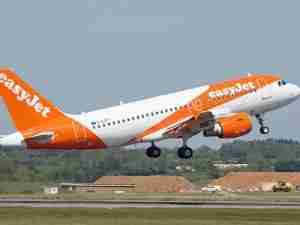Joseph Badamo, VP of Sales, Americas, for Evergreen International Airlines gave a detailed analysis of the Boeing Company's World Air Cargo Forecast at the JFK Airport Air Cargo Association's monthly luncheon on February 24th at the Holiday Inn in Jamaica, New York.
According to Badamo, the study showed a drop in world air cargo traffic in 2001, following on the heels of the attack on the World Trade Center in New York. However, there has been a steady increase in cargo traffic since then. Increases were seven percent in 2002, four percent in 2003 and nearly 11% in 2004. So far, traffic in 2005 seems to be on a trend to surpass 2004.
Boeing predicts that over the next 20 years, world air cargo traffic will expand at an annual rate of 6.2% with Asian markets leading the growth, racking up annual increases for traffic to and from China of about 10.6% per year, slower growth in North America and Europe bring the average down to the 6.2% figure.
In Asia, the West Coast US port strike and the phenomena of the SARS illness produced significant air cargo capacity shortages in the past few years, add to this the worldwide economic recovery that is taking place, and the picture for profits in the air cargo business appear very rosy. Additionally, Boeing predicts that the average growth of worldwide economies is expected to average three percent, which will drive airfreight growth to even higher levels.
Europe- North America airfreight traffic now totals about eight percent of the world air cargo market. This market segment is predicted to grow slightly over five percent in both directions over the next few years.
The largest point of airfreight traffic, to and from Europe, is with Texas airports. In 2004 63,516,189 kilograms of freight moved from Texas to Europe. Next largest was New York, with 61,666,625 kgs moving to Europe.
A factor to consider in attempting to analyze freight statistics is that freighters leaving the United States for the Middle East usually utilize a European hub and this somewhat distorts statistics that show freight going to Europe when it's final destination may be the Middle East, Africa or Asia.
Traffic to and from North America/Asia represents about 8.6% of the total world airfreight market. Exchange rates seem to have an important effect on this market and now, with a declining dollar, outflows to this region are increasing to the point where, at least in weight the inflow/outflow ratio is almost evenly balanced.
New York airports are the big winners in trade with Asia, reporting 64,336,651 kgs in 2004, a 26% increase over 2003. There are 14 carriers operating 178 freighter flights per week in this market.
The only other airfreight market that comes close to competing with New York, in Asia, is Texas, which in 2004 reported 61,178,174 kgs in this market. New York has shown the largest growth and tonnage, and also the largest capacity. From New York, Japan and China represent the most important destinations. From Texas, Singapore is the most important destination.
There are eight carriers operating 33 freighter flights per week to the Middle East. This is a much smaller market than Europe or Asia and it is mostly concentrated in trade with Israel, United Arab Republics, Saudi Arabia, Kuwait and Qatar. Most of the traffic has something to do with the petroleum industry. Some growth is hoped for in this market if the region stabilizes.
Latin America represents one of the bright spots on the air cargo horizon with the economies of this region predicted to grow at an annual rate of at least four percent over the next 20 years. The growth for the air cargo market is pegged at a probable annual rate of five percent, with perhaps even stronger growth in Central America.
Florida airports are the principal beneficiaries of the Latin American trade. In 2004, 103,891,913 kgs. of freight left Florida airports, bound for the South. There are 29 carriers operating 264 flights every week in this market.
The overvi










